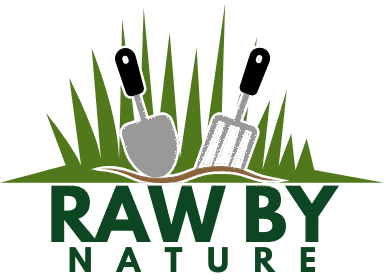Imagine stepping into your garden as the first signs of spring burst forth, a vibrant tapestry of colors and textures greeting you after the long winter months. Whether you’re just starting to dig your hands into the soil or you’ve been tending your garden for years, selecting the best perennials is a joyful, rewarding endeavor that sets the stage for a breathtaking spring showcase. This guide is crafted with both the novice and the seasoned gardener in mind, offering a curated list of perennials that promise not only beauty but also resilience and ease of care.
With the right perennials, you can transform your garden into a sanctuary of perpetual blooms, where each plant plays a starring role in a symphony of life and color. You’ll discover practical insights and tips that make planting and maintaining these perennials both simple and successful, empowering you to cultivate a garden that’s not just beautiful, but also sustainable and low-maintenance. Whether you’re looking to enhance your garden’s design or simply want to enjoy a stress-free gardening experience, this guide is your companion to achieving a stunning spring garden that thrives year after year.
Peonies (Long-Lasting Blooms with Fragrant Appeal)

Peonies are a delightful choice for any spring garden, known for their long-lasting blooms and enchanting fragrance. They thrive best in well-drained soil enriched with organic matter, making them a staple for gardeners seeking a lush floral display.
To ensure your peonies bloom abundantly, plant them in a location that receives at least six hours of sunlight a day. While they are relatively low maintenance, it’s crucial to provide them with a consistent watering schedule, particularly during dry spells.
For optimal growth, consider adding a layer of mulch around the base of your peonies to retain soil moisture and suppress weeds. In regions with cold winters, applying a protective mulch layer in the fall can also help protect the roots from harsh temperatures.
Experienced gardeners may wish to divide peony clumps every few years to rejuvenate older plants and promote more vigorous blooming. When dividing, ensure each section has several healthy buds and roots, and replant them at the same depth they were previously growing.
Daylilies (Low-Maintenance with Vibrant Colors)

Daylilies are an excellent choice for gardeners seeking vibrant colors with minimal upkeep. These perennials thrive in a variety of soil types, making them adaptable to different garden settings.
With a preference for full sun, daylilies will flourish in areas that receive at least six hours of sunlight per day. Although they are drought-tolerant once established, regular watering during dry spells will encourage more prolific blooming.
Planting daylilies is straightforward: place them in well-drained soil, and ensure their crowns are no more than one inch below the surface. In colder regions, consider applying a layer of mulch in late fall to protect roots from freezing temperatures.
For the best growth and bloom performance, fertilize daylilies in early spring with a balanced, slow-release fertilizer. Deadheading spent flowers will not only keep your garden looking tidy but also promote continuous blooming throughout the season.
Hostas (Shade-Loving with Varied Foliage Textures)

Hostas are a fantastic choice for gardeners seeking to add interest to shaded areas of their gardens. Known for their lush foliage, they come in a variety of textures and colors, from deep blue-greens to vibrant chartreuse.
To thrive, hostas require well-draining soil rich in organic matter. Enhance your garden bed by incorporating compost or aged manure, which helps retain moisture while providing essential nutrients.
Watering is crucial, especially during dry spells, as hostas prefer consistently moist soil. Aim to water deeply once a week, ideally in the morning, to prevent the foliage from staying damp overnight, which can lead to fungal issues.
For those looking to elevate their gardening game, consider dividing hostas every 3 to 4 years in early spring or fall to promote vigorous growth and prevent overcrowding. When dividing, ensure each clump has at least three eyes (growing points) to ensure successful re-establishment.
Coneflowers (Pollinator-Friendly and Drought-Resistant)

Coneflowers, known for their vibrant blooms and resilience, are a standout choice for any spring garden. These hardy perennials are not only pollinator-friendly, attracting bees and butterflies, but also drought-resistant, making them ideal for various climates.
To ensure your coneflowers thrive, plant them in well-draining soil with full sun exposure for at least six to eight hours a day. Regular watering is essential during the first growing season, but once established, these plants require minimal irrigation, making them perfect for water-conscious gardeners.
Avoid heavy clay soils, as they can lead to root rot; instead, amend your planting area with compost or sand to improve drainage. For gardeners looking to encourage more blooms, deadheading spent flowers will promote continuous flowering throughout the season.
Advanced gardeners might consider dividing coneflower clumps every three to four years to maintain plant health and vigor. By following these simple steps, you’ll not only enjoy a stunning display of color but also support local pollinators, making your garden a bustling hub of activity.
Garden Phlox (Tall Stems with Striking Clusters)

Garden Phlox, known for its tall stems and striking clusters of blooms, is a delightful addition to any spring garden. These perennials thrive best in areas with full to partial sun, making them perfect for a sunny spot in your yard.
To ensure vibrant blooms, plant Garden Phlox in well-draining, rich soil with a pH between 6.0 and 8.0. Regular watering is essential, especially during dry spells, to maintain the plant’s health and prevent wilting.
For beginners, it’s important to space the plants about 18 to 24 inches apart to allow for air circulation, reducing the risk of powdery mildew. More experienced gardeners can experiment with deadheading spent flowers to encourage a longer blooming period.
Incorporating mulch around the base of the plants can help retain moisture and keep weeds at bay. For those looking to diversify their garden, consider planting Garden Phlox alongside other perennials like Echinacea, which complements its vibrant colors beautifully.
Conclusion: Growing Success with These Plants
As we journey through the vibrant world of perennials, we’ve unearthed five key concepts that echo the nurturing nature of relationships: the importance of choosing the right foundation, the value of diversity and adaptability, the significance of consistent care, the beauty of seasonal renewal, and the joy of shared growth. Just as a garden flourishes with the right perennials, so too do our relationships thrive when we apply these principles.
Now, take a moment to reflect on which concept resonates most with your current relationship landscape and consider one small, meaningful action you can take today—whether it’s investing time in communication or introducing a new shared activity.
I encourage you to bookmark this article as a resource for guidance and inspiration, helping you cultivate the garden of your relationship with wisdom and intention. By revisiting these concepts, you can continue to nurture connections that bloom beautifully, season after season. Remember, with each small step, you’re paving the way for lasting relationship success that grows stronger with time. Embrace this journey and watch your relationship blossom into its full potential. 🌸


